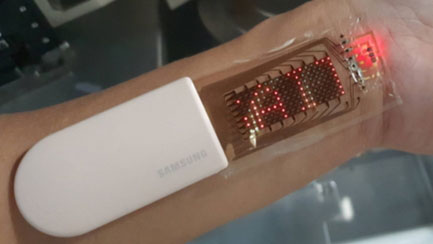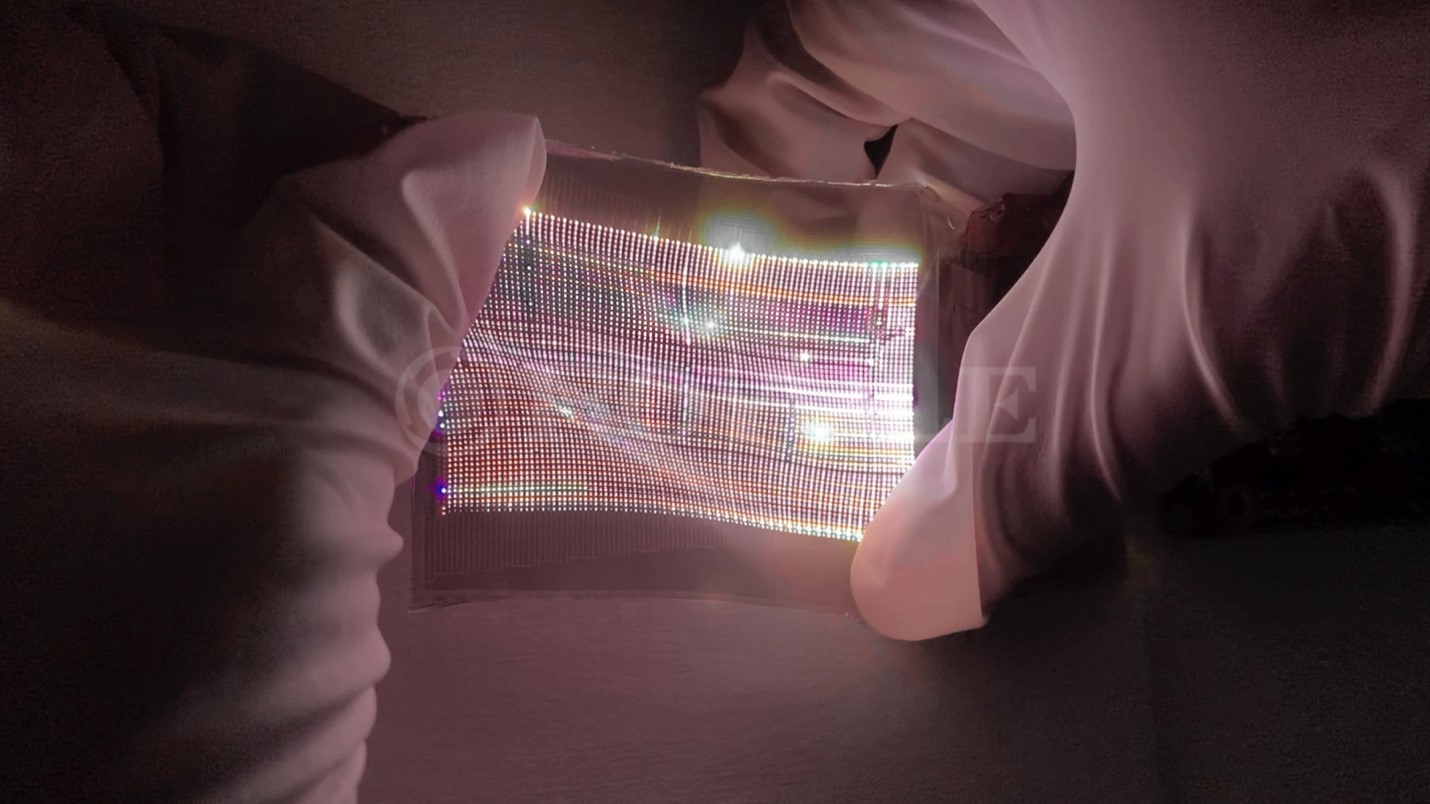Samsung's weird, stretching, wearable screen looks way too 'Cyberpunk' for us
Smartwatches without the watch

New smartwatches and fitness trackers are designed to be as lightweight and close to the skin as possible, but Samsung has skipped straight to the logical conclusion, and has announced it's working on a stretchable display that can be worn straight on your wrist.
According to a blog post on its global newsroom, Samsung researchers have designed an OLED screen that can stretch, and therefore be laid on someone's wrist to monitor their heart rate. You can see the picture of the resulting device above.
Apparently this device still worked when the wrist was moved, or when the display was stretched, showing it's malleable enough to work in various use cases.
- These are the best foldable phones
- The Samsung Galaxy Z Flip 3 is expected soon
- An iPhone Flip could be on the horizon
The project's principal researcher, Youngjun Yun, is quoted as saying "The strength of this technology is that it allows you to measure your biometric data for a longer period without having to remove the solution when you sleep or exercise, since the patch feels like part of your skin.
"You can also check your biometric data right away on the screen without having to transfer it to an external device. The technology can also be expanded to use in wearable healthcare products for adults, children and infants, as well as patients with certain diseases."
So it sounds like the wearable display is designed primarily for health benefits, and not so you can start implanting your smartphone or smartwatch into your arm. Well, for now at least.
Warm-up stretches
Foldable smartphones were in vogue for a while, but before many of them were even released, companies started showing off rolling smartphones. Despite not a single one of them being on the market, it sounds like stretchable displays are the new in thing of tech.
Get daily insight, inspiration and deals in your inbox
Sign up for breaking news, reviews, opinion, top tech deals, and more.
Samsung's research isn't the first stretching screen we've seen, as two weeks prior Royole unveiled a strange new display technology. This is a working display that can be wrinkled and wrapped, though no solid use cases were presented for it, unlike in Samsung's case.

Neither of these examples are consumer-focused, with the Royole one a proof-of-concept, and the Samsung one boasting a niche health application that will take a long time before it's market-ready. But we're not sure we're totally a fan.
Too Cyberpunk
Anyone who's enjoyed cyberpunk or sci-fi fiction, like the recent Cyberpunk 2077, might identify the above image as something that seems ripped straight out of a story. The technology is something that's been seemingly implanted right into the skin, with no boundary between the human and the machine.
Samsung's little dose of transhumanism might appeal to those who view technology simply as a way to enhance the 'self', but others may find technological body modification a little scarily futuristic.
And unlike current technological implants like pacemakers, this sits above the skin, for everyone to see and marvel at. It's performatively cyperpunk.
Also concerning is the giant 'Samsung' logo and plastic shell that takes up as much space as the screen. In Cyberpunk 2077 you can go to a 'Ripperdoc' and get your body modified with technological extras - maybe in real life you'll just get yourself plastered with ads for tech companies.
If you analyze Samsung's new technology from a health viewpoint, it could be really interesting, and present new ways to understand the body. Looking at it as the starting point of a new era of transhuman gadgets, however, might get some people checking what year we're in.

Tom Bedford joined TechRadar in early 2019 as a staff writer, and left the team as deputy phones editor in late 2022 to work for entertainment site (and TR sister-site) What To Watch. He continues to contribute on a freelance basis for several sections including phones, audio and fitness.